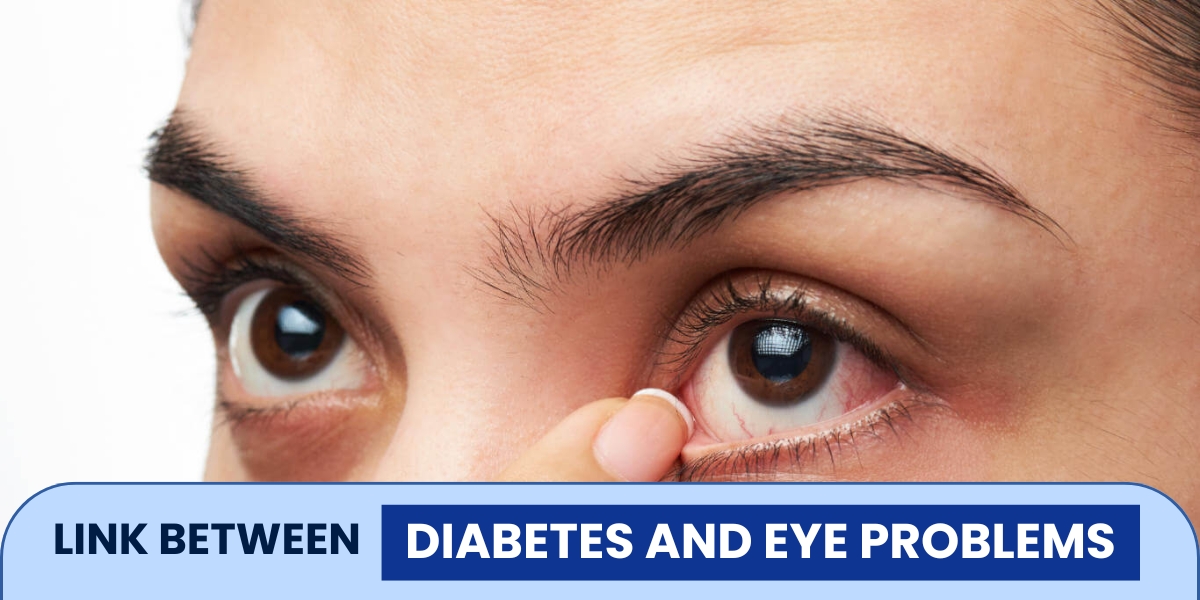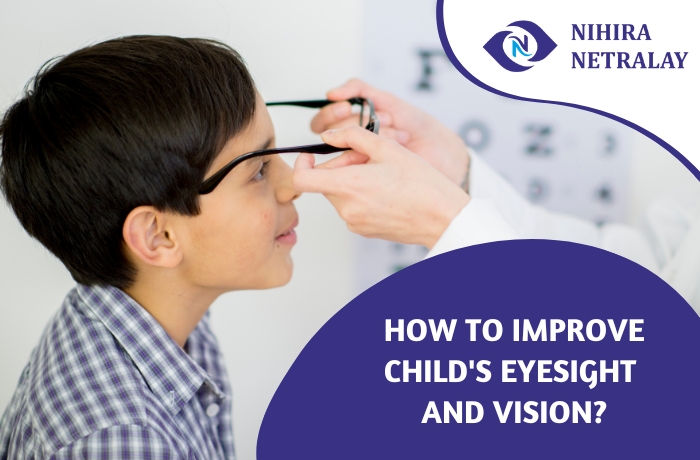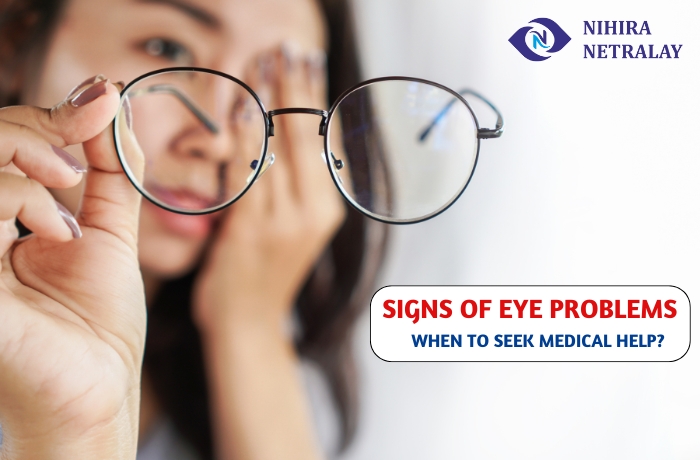Children’s eye fatigue and dark circles are becoming more common problems that can hamper their general well-being and worry parents. While dark circles are frequently linked to adults, a variety of physical, lifestyle, and environmental factors can also cause these symptoms in children. It is possible to effectively manage dark circles and eye fatigue in children and improve their health by being aware of the causes and available treatments.
What Causes Dark Circles and Eye Fatigue in Children?
Dark circles and eye fatigue may seem like simple issues, but they often point to underlying causes that need attention. Here are some common reasons why children develop dark circles and experience eye fatigue:
1. Insufficient Sleep
Sleep is essential for children’s physical and mental development, and insufficient rest can lead to prominent dark circles under their eyes. When children don’t get enough sleep, blood vessels around the eyes become more visible, causing a dark or bluish tint around the eyes. In addition to dark circles, sleep deprivation can cause eye fatigue, leading to symptoms such as dry, red, and sore eyes.
2. Allergies and Sinus Problems
Dark circles are more common in kids who have allergies or sinus problems. Histamine is released during allergic reactions, causing blood vessels to dilate and appear darker beneath the thin skin surrounding the eyes. Allergy-related rubbing and itching can worsen skin damage and cause eye fatigue because of the continuous strain and irritation.
3. Genetics and Skin Pigmentation
Genetics plays a significant role in determining whether a child is prone to dark circles. If there is a family history of dark circles, children may inherit thinner skin or increased pigmentation around the eyes, making them more susceptible to under-eye darkness. Additionally, children with darker skin tones tend to show pigmentation changes more prominently.
4. Dehydration and Poor Diet
Dehydration is another factor that can lead to dark circles and eye fatigue in children. When the body lacks enough water, the skin under the eyes can look dull and sunken, emphasizing dark circles. A diet lacking essential nutrients, especially vitamins A, C, E, and K, can further exacerbate the problem by reducing skin health and elasticity.
5. Increased Screen Time
With the rise in digital learning and recreational screen use, children are exposed to screens for extended periods, leading to digital eye strain. Eye fatigue and dark circles are common in children who spend hours in front of screens without adequate breaks, resulting in dry, irritated, and tired eyes.
6. Environmental Factors
Exposure to pollution, dust, and irritants can impact children’s eye health, leading to both dark circles and eye fatigue. These environmental elements can trigger allergic reactions or cause inflammation, which may contribute to dark circles due to constant rubbing and eye strain.
Symptoms of Eye Fatigue and Dark Circles in Children
Recognizing the signs of eye fatigue and dark circles in children is essential for early intervention. Some common symptoms include:
- Darkened under-eye skin: The area below the eyes appears darker, bluish, or purplish.
- Red or dry eyes: Prolonged screen time and fatigue often result in redness, dryness, or even itching.
- Irritability and mood changes: Poor sleep and eye strain can cause children to become irritable, lethargic, or even disinterested in activities.
- Eye rubbing: Children experiencing eye fatigue may rub their eyes frequently, which can worsen dark circles and lead to further eye strain.
Effective Treatment and Prevention for Dark Circles and Eye Fatigue in Children
1. Prioritize Sleep and Create a Routine
Ensuring children get sufficient rest is crucial for preventing dark circles and eye fatigue. Establish a consistent sleep schedule, and create a calming bedtime routine to help them unwind. Limiting screen time at least an hour before bed can improve sleep quality by reducing eye strain and helping children fall asleep more easily.
2. Address Allergies Promptly
If allergies or sinus problems are contributing factors, consider consulting a pediatrician for appropriate treatment. Antihistamines, nasal sprays, or other prescribed medications can alleviate allergy symptoms, reducing dark circles and relieving eye fatigue. Encouraging children to avoid rubbing their eyes can also help minimize irritation.
3. Encourage a Nutrient-Rich Diet
A well-balanced diet that includes fresh fruits, vegetables, and adequate hydration can make a significant difference. Incorporating foods high in vitamins A, C, E, and K promotes skin health and reduces the appearance of dark circles. Hydration is also vital, so encourage children to drink plenty of water throughout the day to keep their skin looking healthy and fresh.
4. Limit Screen Time and Encourage Breaks
Set limits on daily screen time, especially for non-educational purposes. The 20-20-20 rule is an effective method to prevent digital eye strain: every 20 minutes, children should look at something 20 feet away for 20 seconds. This simple technique allows the eyes to rest and helps prevent both dark circles and fatigue caused by prolonged screen exposure.
5. Use Cold Compresses
Cold compresses or chilled cucumber slices can reduce puffiness and dark circles around the eyes. Applying a cold compress for a few minutes can constrict blood vessels, reducing the prominence of dark circles and providing relief from eye strain. Make sure the compress is not too cold, and avoid applying pressure to avoid skin sensitivity.
6. Maintain a Clean and Allergen-Free Environment
Keep children’s rooms free from dust and allergens that can trigger sinus problems and allergies. Using an air purifier can help reduce airborne irritants and create a cleaner environment. This practice helps reduce allergy symptoms, which in turn minimizes dark circles and eye strain caused by allergies.
When to Seek Medical Help
While dark circles and eye fatigue in children are often not serious, some cases may require professional intervention. Seek medical advice if:
- Dark circles are accompanied by swelling, pain, or other concerning symptoms.
- Eye fatigue is affecting the child’s ability to concentrate or function normally.
- Home remedies and preventive measures do not improve the condition.
A pediatric ophthalmologist can conduct an in-depth analysis to find any underlying conditions that might need special care. Consult Dr. Ankita Patil For your child’s eye health. she is one of the best pediatric ophthalmologist in Nerul, Seawoods, Navi Mumbai.
Find the best child eye specialist in Nerul
Children’s dark circles and eye fatigue may seem concerning, but they can be effectively managed with the right knowledge and preventative actions. Making small adjustments to daily routines and addressing lifestyle factors like nutrition, screen time, and sleep can have a big impact on kids’ eye health. Parents can guarantee the well-being of their children and assist them in leading healthy, active lives by heeding these preventive tips and understanding when to consult a professional.
To Book An Appointment with Dr. Ankita Patil contact this number 8779690795





